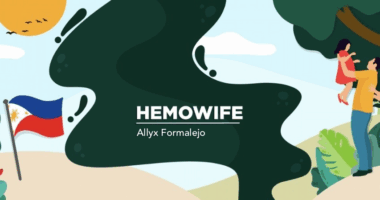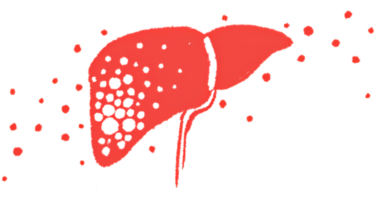Welcome to ‘Hemophilia and Me’

Photo by Jennifer Lynne
Welcome to “Hemophilia and Me.”
Former Hemophilia News Today columnist Shellye Horowitz, who wrote “The Forgotten Factor,” inspired me to dust off my journalism degree and share my own story, and now I’m grateful and honored to join a team of inspirational rock star writers. I plan to carry the torch with as much dignity and grace as she did.
I am a bleeder, a woman with hemophilia. My Type O blood randomly decides not to clot that well, and my life with hemophilia has been quite the journey. I have experienced diagnosis and treatment issues, several near-death events, and lived through the early days of the AIDS crisis. I have experienced social life mishaps, sadness, and embarrassment, but also happiness and inspiration. Hemophilia has shaped my life in so many ways.
‘Shark Week’
In 1975, a routine tonsillectomy when I was 10 turned into a “Shark Week” event. After surgery, I vomited blood in the hospital bathroom. A feeling of dread came over me, an uneasy feeling that something wasn’t right with my body. None of the other kids who had their tonsils removed the same day were vomiting blood. After a few days in the hospital (which was not uncommon back then), the bleeding stopped, and I went home to heal.
Days later, the bleeding started again. My increasingly concerned parents phoned the surgeon, having no idea what to do. We waited for the bleeding to slow, but it got worse. A trip to the emergency room and a second surgery later, the bleeding stopped.
My astute pediatrician suspected there was something more to my tonsillectomy gone awry. A bleeding disorder specialist confirmed I had several “mild” bleeding disorders. They would eventually be given labels — hemophilia type B, von Willebrand disease, and Ehlers-Danlos syndrome.
The dark decades
The 1970s and ’80s were a dark time for people with bleeding disorders. The U.S. blood supply had become contaminated with the virus that causes AIDS, and many people with hemophilia became infected with HIV and hepatitis. Thousands developed AIDS and died, including some of my friends. My treatment could have cost me my life.
In the ’90s, “Aunt Flo” continued to wreak havoc on my body. The extreme loss of blood during my menstrual cycle left me with iron deficiency anemia. I would shake and sweat from the pain. After working a full day, I’d crash on the couch, too exhausted for a social life. Countless dilation and curettage procedures, along with medications, failed to fix the problem. Pregnancy was not an option.
When I was 32, an endometrial ablation put a stop to my monthly bleeding. I was ecstatic not to be a slave to my monthly cycle, but losing the ability to have a child was downright depressing. With my periods behind me, I ran as fast as I could from the hematologist and any treatment. The thought of another AIDS epidemic terrified me. It still does to this day.
Aging brings more struggles
Today, at 56, my life with hemophilia is at a crossroads. My bleeding problems have returned on a somewhat regular basis. My muscles and joints aren’t as strong as they once were, and I bleed into my joints. Sometimes, there is a cause for the bleeding, but not always. When I don’t treat the bleeding, I lose a little bit of the function in that joint.
I know how to infuse myself with clotting factors. Self-infusion is something boys and girls with hemophilia learn at summer camp. Some women now use clotting factor infusions to control their monthly periods.
When I self-infuse, I stick a needle into my rolling and hard-to-find hand veins. Sometimes this process takes three or four tries. I do this as infrequently as possible. I am not very good at it, and I wouldn’t say I like using the same medication that cost so many their lives decades ago.
There is hope
But, oh, what a journey it has been! Advances in treatment, especially for those with severe hemophilia, have been significant. Only recently, however, are we discovering the impacts of bleeding disorders on women. Diagnosis for many women comes later in life, and even then, treatment can be challenging and complicated to come by. As a woman with hemophilia, I believe it’s time to bring awareness to these issues.
I am honored to share my journey with you and hope to learn of others’ journeys, too. Stay tuned!
***
Note: Hemophilia News Today is strictly a news and information website about the disease. It does not provide medical advice, diagnosis, or treatment. This content is not intended to be a substitute for professional medical advice, diagnosis, or treatment. Always seek the advice of your physician or another qualified health provider with any questions you may have regarding a medical condition. Never disregard professional medical advice or delay in seeking it because of something you have read on this website. The opinions expressed in this column are not those of Hemophilia News Today or its parent company, Bionews Services, and are intended to spark discussion about issues pertaining to hemophilia.








Deborah Howard
Hi Jennifer!
My name is Deborah Howard and Shelllye Horowitz is my daughter. First of all, I need to say how proud I am of her and all she has accomplished with her articles and research. Having read your article, I'm so happy that you are the one to be following her. Sharing your story is so important and means so much to the hemophiliac women who now have a new voice to hear from. I can't wait to read more from you and sending best wishes as begin your journey!!!!
Jennifer Lynne
Hi Deborah! Thank you so much for your very kind comments. I listened to Shellye give a talk at a conference over the weekend; not only is she a gifted writer, but she is a talented presenter as well! You must be very proud! She leaves behind big shoes - I will do my very best to fill them.